mobile Ansicht, to the English Version tap the flag
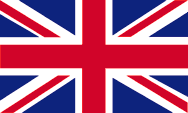

• Flagge
• historische Flaggen
• Bedeutung/Ursprung der Flagge
• Wappen
• Bedeutung/Ursprung des Wappens
• Landkarte
• Zahlen und Fakten
• Geschichte
• Ursprung des Landesnamens
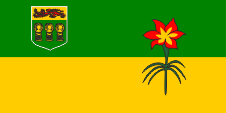
Flagge der Provinz Saskatchewan,
Seitenverhältnis = 1:2,
Quelle: Corel Draw 4






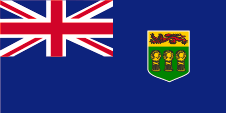
1906–1965,
Flagge der Regierung (Staatsflagge),
Seitenverhältnis = 1:2,
Quelle, nach:
World Statesmen



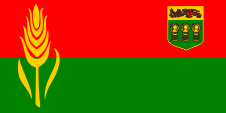
1965–1967,
Provinzflagge,
Seitenverhältnis = 1:2,
Quelle, nach:
World Statesmen




Die heutige Flagge von Saskatchewan wurde am 22.09.1969 angenommen. Sie zeigt in zwei waagerechten Streifen die Farben Grün und Gelb. Am Mast befindet sich im grünen Streifen das Wappenschild von Saskatchewan, im fliegenden Ende, in der Mitte der Flagge, eine rote Blume. Die Farben der Flagge sind vom Wappen der Provinz entlehnt, wobei Gelb für die Weizenfelder steht und Grün für die Wälder. Bis 1922 hätte von den Dienststellen der Provinzen offiziell der britische Union Jack, die sogenannte Royal Union Flag, verwendet werden müssen, oder aber (ab 1922 im Prinzip nur noch) die kanadische blaue Dienstflagge, der typische Britische Blue Ensign, mit dem Wappenschild Kanadas im wehenden Ende. Dennoch hatten die Provinzbehörden eigene Siegel und später auch Wappen, die eigenmächtig im wehenden Ende auf der blauen Dienstflagge platziert wurden. Für dieses Verfahren hätte eine Genehmigung der britischen Behörden vorliegen müssen, was jedoch nicht der Fall war, aber toleriert wurde. Privatpersonen hatten den Union Jack zu verwenden und ab 1892 den sog. Red Ensign, die rote Version der kanadischen Flagge mit dem Union Jack in der Oberecke und dem Wappen Kanadas im wehenden Ende. Im Zuge der allmählichen Trennung Kanadas von Großbritannien verlor der Blue Ensign als amtliches, britisches Kennzeichen seine Bedeutung und man ersetzte ihn durch neue Provinzflaggen, die von Behörden und Dienststellen der Provinzen und auch von Privatpersonen verwendet werden dürfen. So führte Saskatchewan 1965 eine neue Flagge ein. Sie zeigte zwei waagerechte Streifen in Rot und Grün, das Wappen am wehenden Ende oben im roten Streifen und am Mast eine stilisierte Getreideähre. Sie wurde 1967 durch das heutige Modell abgelöst.
Quelle:
Flaggen Enzyklopädie,
World Statesmen


seit 1906,
Wappenschild von Saskatchewan,
Quelle, nach:
Corel Draw 4

Es gibt ein reguläres Wappen für Saskatchewan, mit Postament, Schildhaltern, einer Wappenkrone und dem Motto. Hier dargestellt ist nur der zentrale Teil des Wappens, der Wappenschild. Das Wappenschild von Saskatchewan zeigt im oberen Teil einen roten britischen Löwen auf Gold. Der untere Teil des Wappenschilds ist grün mit drei Getreidegarben darauf.
Quelle:
Volker Preuß

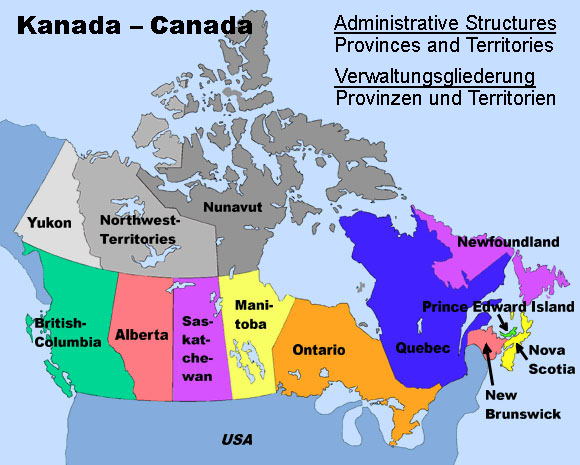
Landkarte/Map:
Volker Preuß

Fläche: 577.060 km²
Einwohner: 1.132.505 (2016)
Bevölkerungsdichte: 2 Ew./km²
Hauptstadt: Regina, 215.100 Ew. (2016)
Amtssprache: Englisch
sonstige Sprachen: Deutsch, Französisch
Währung: kanadische Währung
Zeitzone: MEZ – 7 h bis – 8 h
Quelle:
Wikipedia (D)

ca. 30.000 Jahre v. Chr. · erste Besiedlung durch Ureinwohner
ca. 8.000 Jahre v. Chr. · Besiedlung durch Indianerstämme der Assiniboine, Blackfoot und Cree
17. Jhd. · französische und englische Pelzhändler streifen durch das heutige Saskatchewan
1670 · das heutige Saskatchewan wird als Rupertsland von der Hudson's Bay Company erworben
1869 · die Hudson's Bay Company (HBC) überträgt alle ihre territorialen und Hoheitsrechte an das britische Dominion Kanada
1870 · Bildung der Nordwest-Territorien aus den Gebieten der HBC (Rupertsland und Nordwestliches Territorium)
1882 · Gründung von Saskatchewan als Distrikt der Nordwest-Territorien (Hauptstadt Battleford)
1883 · Bildung der Territorien Alberta, Athabaska, Saskatchewan und Assiniboia durch Herauslösung aus den Nordwest-Territorien
1905 · Saskatchewan wird durch Anschluss von Assiniboia und Teilen Athabaskas vergrößert, und als Provinz an das Dominion Kanada angeschlossen, Hauptstadt wird Regina (ehemalige Hauptstadt von Assiniboia)
Quelle:
Atlas zur Geschichte,
World Statesmen,
Wikipedia (D),
Discovery '97

Der Name der Provinz geht auf den Saskatchewan River zurück. Die Cree-Indianer nennen ihn kisiskāchiwani-sīpiy, was mit "schnell fließender Fluss" übersetzt wird.
Quelle:
Wikipedia (D)


![]()












